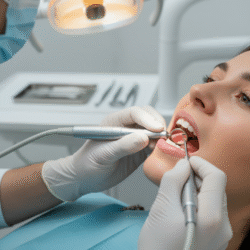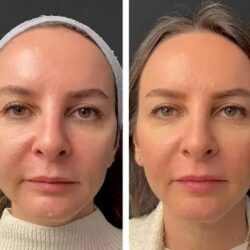Hair loss can be tough. It can lower your confidence and make you feel less like yourself. But the good news is, there are effective prescription hair loss treatments that can help. With the right medication, you can slow down hair loss, boost new growth, and feel better about your look again.
Let’s talk about how these treatments work, what types are available, and how prescription tablets for hair loss can make a difference in your journey to healthy hair.
Understanding Hair Loss
Hair loss can happen for many reasons. It may be genetic, hormonal, or linked to stress, diet, or certain medical conditions. For some people, it starts slowly. You may notice thinning at the crown or a receding hairline. For others, it happens faster.
It’s normal to shed some hair daily, but if you notice more hair on your pillow, in your comb, or in the shower drain, it might be time to act. The earlier you treat it, the better the results can be.
Why Prescription Hair Loss Treatments Work
Many people try shampoos, oils, and over-the-counter products first. While these may help improve scalp health, they rarely stop the root cause of hair loss. Prescription options, however, work on a deeper level.
They target hormones or circulation problems that cause thinning hair. Some help to block DHT, the hormone responsible for male and female pattern baldness. Others increase blood flow to hair follicles, helping them grow stronger and thicker strands.
These treatments are stronger and backed by medical studies, which means they are more effective for many people.
Popular Prescription Hair Loss Treatments
Let’s look at the most common and trusted options for treating hair loss with prescription help.
1. Finasteride
Finasteride is one of the most well-known prescription medicines for hair loss. It’s often taken as a tablet and works by reducing DHT levels in your body. Lower DHT means less hair follicle damage and more chances for regrowth.
It’s mainly used for men but can be prescribed for women in certain cases under medical advice. Results usually start to show after three to six months of regular use.
2. Minoxidil (Prescription Strength)
You might have heard of Minoxidil in over-the-counter products. However, prescription-strength Minoxidil is more powerful and can deliver better results. It helps increase blood flow to the scalp and reactivates dormant hair follicles.
Minoxidil comes in foam, lotion, or gel form, depending on what your doctor suggests. It’s suitable for both men and women.
3. Dutasteride
This is another prescription medication similar to Finasteride but even stronger in blocking DHT. It’s often used when Finasteride doesn’t deliver enough results.
Doctors may prescribe Dutasteride for more advanced stages of hair loss. It’s usually taken in tablet form and works gradually over time.
4. Combination Treatments
Sometimes, doctors suggest using two or more treatments together. For example, a prescription tablet along with a topical gel or foam. This dual approach targets hair loss both from inside and outside, leading to better regrowth and thicker hair.
The Role of Prescription Tablets for Hair Loss
Prescription tablets for hair loss work by balancing hormones, improving circulation, or boosting nutrient supply to hair follicles.
These tablets are easy to take and can become part of your daily routine. Most people prefer them because they don’t have to apply anything to their scalp. Over time, they help stop further hair loss and support regrowth.
However, results take patience. It’s not a one-week fix. Consistency is key. You need to follow your doctor’s advice and continue the treatment to see visible improvement.
Benefits of Prescription Hair Loss Treatments
- Effective Results: Medical studies show these treatments can reduce hair loss and encourage new growth.
- Easy to Use: Tablets and topical gels are simple to include in your routine.
- Boosts Confidence: Seeing improvement in your hair can lift your mood and self-esteem.
- Tailored for You: Doctors can adjust dosage or combine treatments based on your specific needs.
Are There Any Side Effects?
Most prescription treatments are safe when used correctly. Still, it’s important to follow your doctor’s instructions.
Possible mild side effects include:
- Slight scalp irritation (with topical gels)
- Temporary shedding (as new hair replaces old)
- Hormonal effects (with tablets like Finasteride or Dutasteride)
If you notice any discomfort, always talk to your doctor. Never stop or change your dose without guidance.
Tips to Support Your Hair Growth
Medication works best when you support it with healthy habits. Here are a few tips:
- Eat a balanced diet with vitamins, protein, and iron.
- Avoid harsh shampoos or chemical treatments.
- Massage your scalp regularly to boost circulation.
- Stay hydrated and manage stress levels.
- Sleep well to help your body repair and grow hair naturally.
These habits work with your prescription treatment to give better and faster results.
When to See a Doctor
If you notice sudden hair loss, bald patches, or scalp pain, don’t wait. See a doctor or dermatologist. They’ll find the cause and suggest the right treatment for you.
Sometimes, hair loss is linked to thyroid issues, stress, or nutrient deficiencies. A professional can run tests and tailor your treatment plan based on what your body truly needs.
Realistic Expectations
Remember, hair growth takes time. It’s a slow process. Prescription treatments can take three to six months before you see visible change. Consistency and patience matter most.
Don’t get discouraged if you don’t see instant results. Keep up with your routine, and over time, your hair will feel thicker and healthier.
Final Thoughts
Losing hair can be stressful, but it doesn’t have to stay that way. Modern science has made amazing progress in treating hair loss effectively. With the right prescription hair loss treatments, you can slow down shedding, strengthen your roots, and bring back your confidence.
Prescription tablets for hair loss are one of the best ways to tackle thinning hair from the inside out. They work with your body to promote long-term growth and restore your natural look.
If you’re ready to take the next step, talk to your doctor today. With the right care, your hair can grow back stronger, thicker, and healthier than before.





